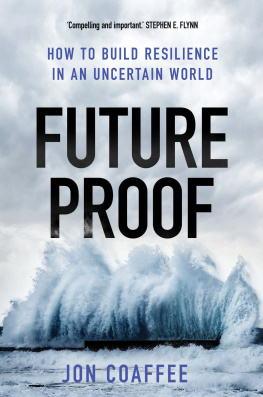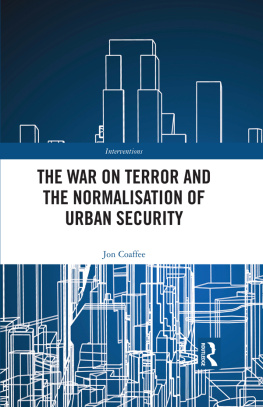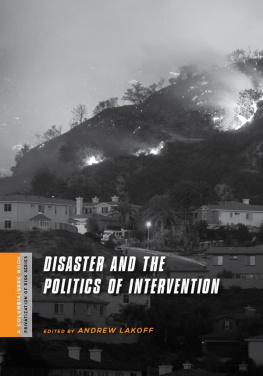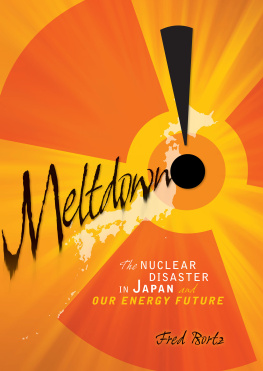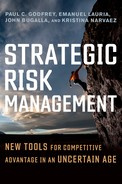FUTUREPROOF

Copyright 2019 Jon Coaffee
All rights reserved. This book may not be reproduced in whole or in part, in any form (beyond that copying permitted by Sections 107 and 108 of the U.S. Copyright Law and except by reviewers for the public press) without written permission from the publishers.
For information about this and other Yale University Press publications, please contact:
U.S. Office:
Europe Office:
Set in Minion Pro by IDSUK (DataConnection) Ltd
Printed in Great Britain by Gomer Press Ltd, Llandysul, Ceredigion, Wales
Library of Congress Control Number: 2019941048
ISBN 978-0-300-22867-0
A catalogue record for this book is available from the British Library.
10 9 8 7 6 5 4 3 2 1
For Maggie
CONTENTS
ACKNOWLEDGEMENTS
The research that underpins this book would not have been possible without financial support from a range of UK research council and European Union awards, whose funding has permitted me the opportunity to engage with many aspects of the futureproofing challenge. I have also received generous support from the University of Warwick.
The range of topics and examples covered in this book has meant that the work supporting it has been a collaborative effort. Special thanks must go to my small team at the Resilient Cities Lab at the University of Warwick; Jonathan Clarke and Rob Rowlands; as well as all numerous research partners whom I have worked with over the last 20 years.
Many people have helped me assemble this book. In particular, my editors at YUP provided superb advice throughout and made valuable suggestions on the manuscript style.
Special thanks are also due to the coffee shops of Moseley in Birmingham, UK, that fuelled the production of the text and provided a convivial working environment that allowed thoughts to flow freely. Coffee houses, as the reader will see, have historically played an important role in the advance of a more resilient world.
INTRODUCTION
There is a tendency in many armies to spend the peace time studying how to fight the last war.
Lieutenant Colonel J. L. Schley, of the US Corps of Engineers, 1929
The Nations resilience depends upon many decisions and actions that strengthen the ability to respond and adapt.
The Obama Administration, October 2016
At 2.46 p.m. Japan Standard Time on Friday 11 March 2011 an earthquake hit the eastern seaboard of Japan. It was the largest earthquake in recorded history to hit the country and was the fourth most powerful worldwide since modern records began in the early twentieth century. In Tokyo, less than 200 miles from the epicentre, the trembling lasted a full six minutes. Damage resulting from the earthquake itself was just the start. The sudden seismic shock also exposed the underlying vulnerabilities of highly interlinked social and technical systems and, within minutes, the earthquake set off a chain of events that would lead to the so-called triple disaster of 3/11.
The ensuing chaos that unfolded was very much Made in Japan. The essential failings in the response to the events were shaped by the ingrained conventions of a centralised governance culture where official narratives of risk management remained unquestioned.the tsunami. The higher than predicted impacts contributed to the confusion that followed as a mixture of poor communication and mishandled evacuation procedures resulted in significant damage and loss of life. More than a million buildings were destroyed with entire villages obliterated. The tsunami alone killed over 15,000 people, and displaced more than 150,000 others. Economic losses have been estimated at anywhere from $250 billion to $500 billion.
Alongside these failures in the response to the earthquake and tsunami, on the coast 140 miles north of Tokyo a parallel set of pre-disaster planning failures were emerging at the Fukushima nuclear power plant. The earthquake had already knocked out electricity at this facility, but emergency backup systems seemed to be functioning properly. Then the tsunami hit. Topping 13.5 metres, it was beyond all predictions. The plant was quickly flooded and its backup generators incapacitated. The complete power loss launched a spiralling catastrophe that captivated the world through global media coverage. Coordinated evacuation did not take place for more than 48 hours and there was a massive failure of the national government to react quickly and communicate ever-increasing radiation levels. This culminated in the largest nuclear disaster since Chernobyl in 1986.
In the years following 3/11, at least 100,000 people who were evacuated from the surrounding area have been unable to return. Many of the displaced are displaying high rates of mental health problems, particularly post-traumatic stress disorder. Six years after the disaster cancer cases have been directly linked to the radiation fallout and genetic mutation of flora and fauna near the Fukushima plant has been observed. The larger legacy of the nuclear disaster, earthquake and tsunami will take decades to be fully realised, and efforts to rebuild the shattered lives of the affected communities are largely yet to begin.
*
Exemplified by the 3/11 disaster in Japan, major disruptive events and their amplification in global and social media have led to an urgent need for the ideas of resilience to be adopted as we attempt to futureproof our world. In a global society mired by uncertainty and crisis, we must learn the lessons which disaster illuminates so that we are better able to survive, thrive and bounce back more effectively from all manner of disruptions. This means engaging in processes that can better anticipate likely risks and develop new ways of reducing the harmful effects of future shocks and stresses.
The massive impact of these so-called black swan events exemplified by the 1986 Chernobyl nuclear disaster, 9/11, Hurricanes Katrina in 2005 and Sandy in 2012, and the Tohoku triple disaster in Japan leads to an immediate effort, whatever the cost, to respond. This inevitably means pulling together, adapting and returning to normal as quickly as possible, all while preparing for the next impending catastrophe. These outlier events are also significant because they often defy the normal laws of insurance coverage that has, for centuries, provided a compensation mechanism against future risk.
Despite such black swan incidents being rare, they have captured the public and political imagination, further fuelling the need for protection against a volatile and unknown future. The growing number of more recent disastrous events and large-scale disruptions that have showcased the vulnerability, connectedness and complexity of contemporary social, economic and political life as we know it has compounded this drive for futureproofing. Such events are no longer exceptional but normal and, we are told, inevitable. Their frequency and impact have grown as we slowly but surely begin to see the real and unanticipated long-term impact of centuries of human progress. The need to respond is pressing and urgent.
Indeed, in early 2018 it was announced that the year 2017 was the costliest on record for the impact of disasters in the United States. Insurance figures set the total economic losses from just hurricanes, earthquakes and wildfires at well over $300 billion. Sixteen separate events within these figures had losses of over $1 billion each and resulted from extreme weather. In California, years of drought were ended with the wettest winter on record. This was not enough to stop the most devastating wildfire season ever taking hold, causing historic levels of death and destruction. Almost 9,000 wildfires ripped through the Golden State, leaving 1.2 million acres of land burnt, 11,000 structures incinerated and leaving nearly 50 people dead. Temperatures peaked at well over 38 degrees Celsius in many parts of the state in what was the third hottest year since records began. San Francisco also reported its highest-ever temperature of 41 degrees Celsius.
Next page
